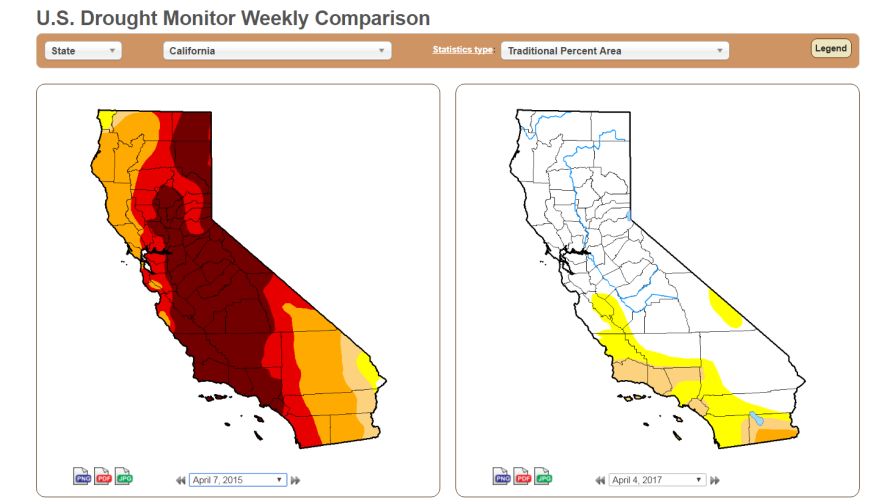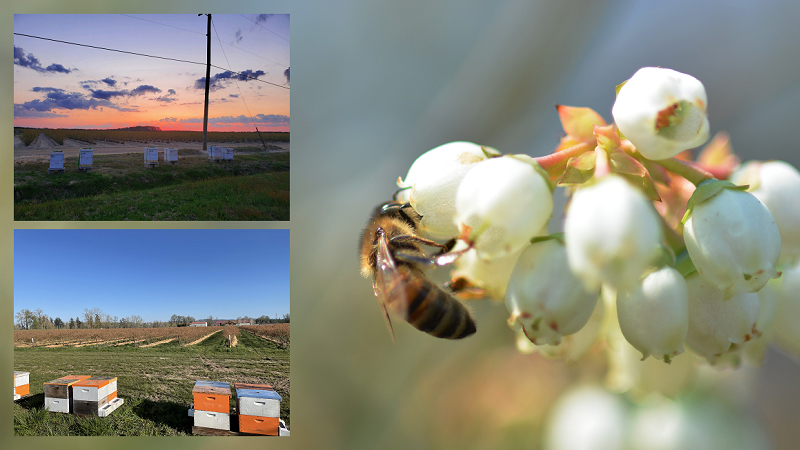How California’s No-Drought Status Affects Growers

The difference a season of heavy rains and a deep snowpack can make! On the left, all of California was in a drought, with much of the state in an “exceptional drought,” the most severe designation given by the U.S. Drought Monitor. On the right, a recent drought status map.
California Governor Jerry Brown has declared that the drought state of emergency is now over for all of California accept four counties: Fresno, Kings, Tulare, and Tuolumne. In the same executive order that lifts the state of emergency, Gov. Brown reinforces water conservation set in place in 2016 to help weather the next inevitable drought.
The four counties still considered in a drought have plentiful surface water. Their groundwater levels, however, are still very low.
What does all this mean for growers? First, Gov. Brown’s Executive Order B-40-17 rescinds:
- Two emergency proclamations from January and April 2014. These proclamations established that a drought was occurring.
- Four drought-related executive orders from 2014 and 2015. These orders included the 25% reduction in urban water use, the first such restriction in California’s history, as well as boosting the ability of state agencies to enforce the restrictions.
What’s still in effect? Executive Order B-37-16. That executive order addressed improving water efficiency for both urban areas and agriculture.
Here is what it had to say about agricultural water use (this list starts at 11, since items one through 10 related to urban water use):
Improve Agricultural Water Use Efficiency and Drought Planning
11. The Department shall work with the California Department of Food and Agriculture to update existing requirements for Agricultural Water Management Plans to ensure that these plans identify and quantify measures to increase water efficiency in their service area and to adequately plan for periods of limited water supply.
12. The Department shall permanently require the completion of Agricultural Water Management Plans by water suppliers with over 10,000 irrigated acres of land.
13. The Department, together with the California Department of Food and Agriculture, shall consult with agricultural water suppliers, local governments, agricultural producers, environmental groups, and other partners to update requirements for Agricultural Water Management Plans. The updated draft requirements shall be publicly released by January 10, 2017.
The Department, Water Board and California Public Utilities Commission shall develop methods to ensure compliance with the provisions of this Executive Order, including technical and financial assistance, agency oversight, and, if necessary, enforcement action by the Water Board to address non-compliant water suppliers.
All Central Valley Growers Now Have a 100% Allotment
As American Vegetable Grower reported in late March, growers south of the Delta in the Central Valley were given a 65% allotment by the U.S. Bureau of Reclamation. With this declaration, the growers are now receiving a 100% allotment, the San Francisco Gate report.









